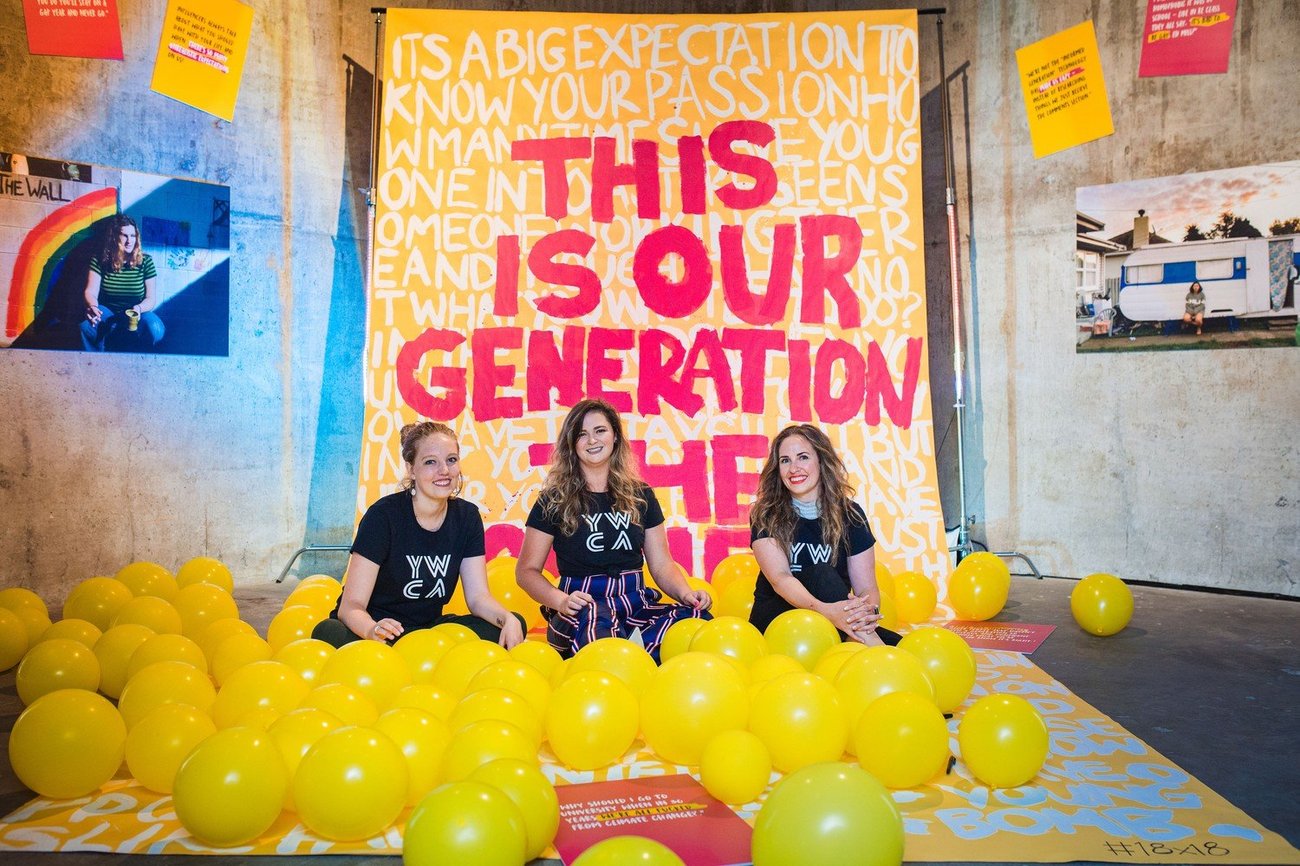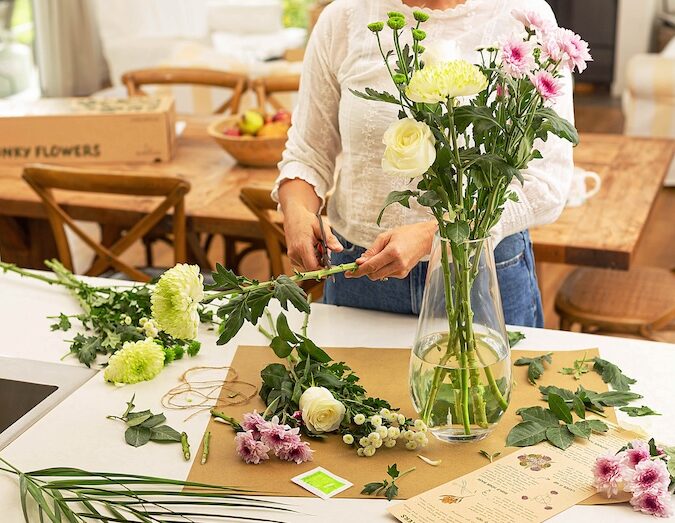
The YWCA recently launched its 18×18 project, which is a travelling immersive photo essay experience into the real lives of 18-year-old young women today. The organisation spent a year interviewing young women, and collating their stories and photos into a roving exhibition experience. Here, Verity Johnson reports back on what they learnt about engaging with the younger generation in New Zealand on a very impactful project.
One of the challenges of being founded in 1878, is that for an old organisation like YWCA you’ve got to keep coming up with ways of being relevant that still stay true to your brand’s purpose. Even if you’ve been doing it for over 140 years like we have.
In our case, our focus as an organisation centres around raising the voices of young women in Aotearoa. And so our focus for 2019 was how we do this in a way that adds new zest to a what’s now a well established goal.
We knew we wanted to start with some honest storytelling but not from us, from the young women themselves. You’d heard it all before from us, and the power lies in us giving a platform to young women to be brutally honest (often for the first time) in their opinions.
We’d kept hearing how the girls were unhappy with how inaccurately the mainstream portrayed young women’s lives. And what with the upswell of youth issues such as climate change strikes and mental health crisis, and rumblings about generational differences, it seemed like there was a great deal of interest and confusion about what young people these days are feeling.

The time felt right to do something, and after reading a similar photo essay in the New York Times on 18-year-old American girls, it had never felt like a better time to ask our girls to tell their stories. So came along the 18×18 project, a travelling immersive photo essay experience into the real lives of 18 year old young women today. We spent the year interviewing young women, and collating their stories and photos into a roving exhibition experience.
This November we opened in Silo 6, Silo Park, before beginning our tour around Auckland. But the goal wasn’t just to cater to the usual audience of photo exhibitions and art galleries. What we really wanted to do was reach the 18 year old girls too – especially ones who’ve traditionally felt ignored. We wanted these young women to know we were listening.
Naturally that raised the big question, how do we engage 18 year olds? Especially those who’d never normally go to an art exhibition? And especially with a brand that’s over 140 years old?
Harnessing the power of micro influencing

In order to get our audience in the door, we knew we had to engage with 18-year-olds in an authentic way that felt natural for them. With all the research suggesting that Gen Z are rejecting the over curated aesthetic of millennials, and increasing valuing authenticity in social media, we decided to use a solely micro-influencer approach to our marketing. Instead of likes, we aimed for engagement and dialogue between the girls and their friends on the exhibition.
We decided to employ a network of nano influencers, including the girls featured themselves, and provided them with their own shots of themselves in order for them to show their friends what they’d been working on. This helped them get excited about the project, as well as creating a lot of authentic engagement on posts. The girls loved showing what they’d been up to and it was well received by their friends who saw them as championing many issues the young women were already feeling. This strategy of focussing on authentic community level engagement really paid off, we sold out our 320 opening night tickets and had to start a wait list!
Acknowledging the rise in demand for ‘experience’ exhibitions

We knew we had to craft the exhibition to both to reflect the mindset of a teenager, and also to attract them. As such, we had to recognise that Gen Z has very different ideas of what an exhibition should involve. What with the rise of the experience economy, and success of insta-famous experiences museums like The Museum of Ice Cream, we knew that the overwhelming demand from younger audiences was for more experience based exhibitions. People don’t want to just look at something, they want to feel it on every level.
Our first step was to transform the venue where we housed the art into the bedrooms of teenage girls. One was recreated as the aftermath of a party, and we had an actor playing the role of a teenage girl on the morning after her birthday. There was a second bedroom where in it was placed a contemporary dancer. Throughout the night, we played audio monologues compiled from snippets of the girls’ interviews, and our dancer performed accompanying interpretive pieces to them. The final Silo was filled with hundreds of balloon and a 6m high paper roll painted with quotes from the girls interviews describing how 18 feels. Guests were invited to write their own impression of what 18 was for them on the balloons, and watch their thoughts float amongst the thoughts of hundreds of others.
The gamble paid off. The experience really captured the audience, guests lingered for much longer than expected absorbing the installations, taking photos and commenting about them both in person and online.
Creating complementary digital experiences alongside the ‘IRL’ ones

To build out the living museum experience, we wanted to create an interactive audio experience to accompany the installations. Not one you just listened to, but one you actually created yourself and could see. So we used the brand new Amazing Transcribe technology fresh from the US, that allows live transcriptions from voice recordings.
We asked everyone what was one word they’d use to sum up 18 for their generation? Then we recorded them via our phones using in-browser voice recognition technology, which was then linked via Amazon Transcribe to the 18×18 website. Every time someone recorded an answer onto our phones, it was live transcribed and turned into a visualisation on the site. Then the site was live streamed onto a wall, so participants could literally see the words and audio appearing before their eyes!
It was very popular on the night, and a great interactive chance to canvas people’s thoughts from all generations. The audio scape is still alive and living, and you can contribute your thoughts to it at www.18×18.co.nz.
And lastly…giving them something retro to take home

We also knew that despite this generation’s penchant for all things digital, there was an undeniable allure of the polaroid camera. (Every single girl we interviewed had a polaroid of her and her friends on her wall!) So with this in mind, our principal sponsor Huawei teamed up with us to create a personalised polaroid-style photo booth. Giving all the girls their own ‘retro’ printed photo to take home from the night. And again they were a huge hit, featuring heavily on the feeds of the young women and creating another opportunity for our partners to get engagement with the young women themselves.

Ultimately through utilising digital, visual and audio storytelling, and the power of the honest voices of the girls themselves, we managed to attract and engage young women from all walks of life in the exhibit. It was a great chance to understand and connect with them in a way we’d never done before, and to give them a chance to put their voices at the center of everything we did.




